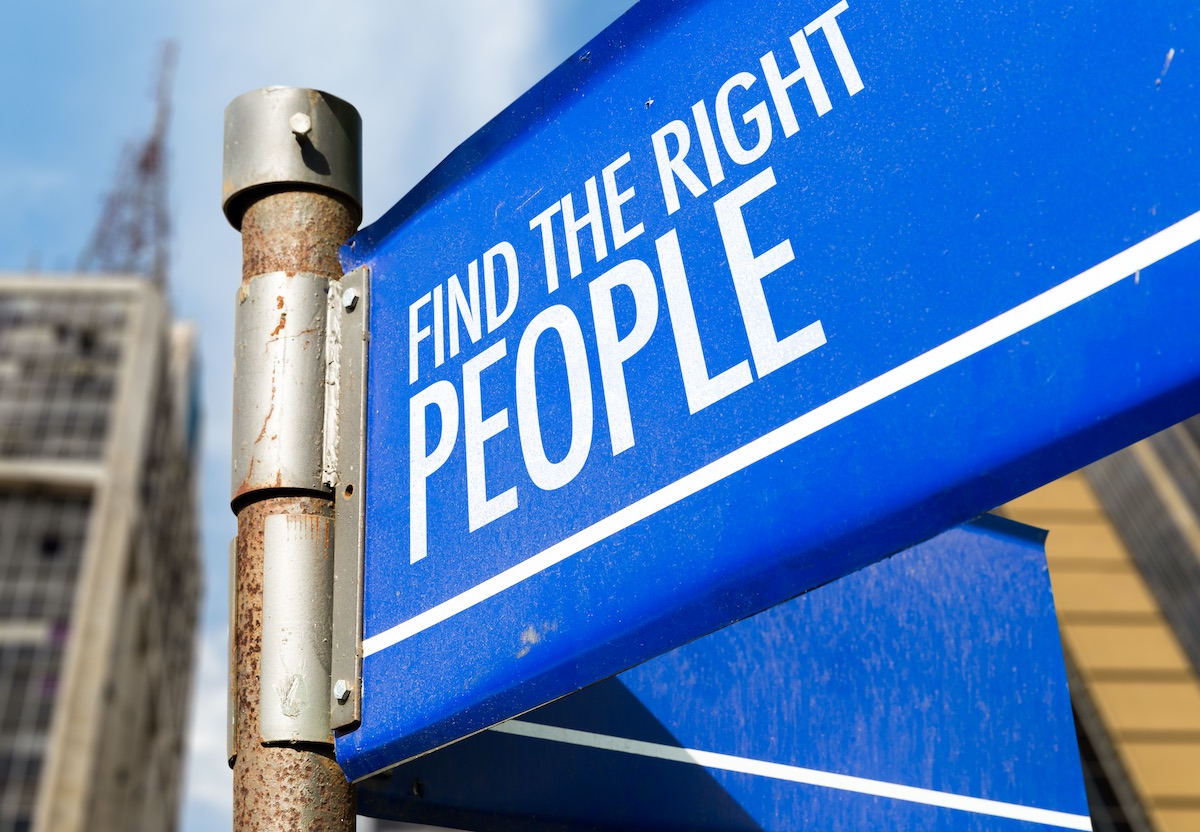How to avoid being accused of bullying and harassment at work
What constitutes bullying and sexual harassment and 8 proven strategies of monitoring your own behaviour to make sure you and your team are tracking well.
Bernadette Eichner

Recent events in Australia have put safety at work squarely in the headlines again. Particularly safety at work for women. A 2020 National Survey revealed that 39% of women and 26% of men have experienced sexual harassment in the workplace in the past five years. Yet only 17% actually reported it in 2018.
Bullying is reported by around 10% of the Australian workforce, but a 2019 study found that the rate of bullying in Australian workplaces was more likely to be around 32% – that is a third of workers reported being bullied in any given week!
While we have legislation around bullying and harassment, it seems the biggest challenge to changing these statistics is actually understanding what it is.
Five years ago, I was writing about bullying and harassment in the Australian workplace as part of the push to help people understand what it looked like so they could avoid falling foul of the legislation.
But it seems we are still nowhere near understanding it. Here’s an example.
Just the other day, I had a male employer say to me that he couldn’t understand why putting his hand on a woman’s leg while he congratulated her on a job well done should be a problem. “Aren’t I even allowed to say well done to a woman these days?”, he exclaimed in frustration. So I asked him if he would put his hand on the leg of a man while congratulating him on a job well done and he recoiled with, “of course not! I wouldn’t want to give him any weird ideas!”. I then asked him how he would feel if a woman put her hand on his leg while saying what a great job he was doing and his response was “well, I’d be uncomfortable because it’s a clear sign she wants something more and then I’d be the one in trouble!”
See what I mean? Now this bloke isn’t a bad bloke. He’s just unaware. And perhaps a bit unreconstructed!
I can also give you hundreds of examples of employers not understanding what constitutes ‘bullying’ at work – male and female bosses alike.
So let’s take a look at what sexual harassment and bullying actually is. And then we shall give you some comfort around what isn’t bullying and/or harassment.
What is sexual harassment?
To ensure this is not just “my spin” on it, here is the definition, copied verbatim from the Australian Human Rights website:
Sexual harassment is any unwanted or unwelcome sexual behaviour where a reasonable person would have anticipated the possibility that the person harassed would feel offended, humiliated or intimidated. It has nothing to do with mutual attraction or consensual behaviour.
Examples of sexual harassment include:
- Staring, leering or unwelcome touching
- Suggestive comments or jokes
- Unwanted invitations to go out on dates or requests for sex
- Intrusive questions about a person’s private life or body
- Unnecessary familiarity, such as deliberately brushing up against a person
- Emailing pornography or rude jokes
- Displaying images of a sexual nature around the workplace
- Communicating content of a sexual nature through social media or text messages.
I’d add another one in here, having experienced it myself in the past – inferring that someone’s opportunities in the company may be enhanced in return for sexual favours.
What is NOT sexual harassment
- Complimenting someone on their dress or suit
- Congratulating someone on a job well done
- Inviting someone to join the team for an after work drink (what you do at the pub after you get there might be on the list above though!)
- Accidentally brushing up against someone and then apologising
- Asking someone whether they had a good weekend
- Offering comfort and assistance if someone is distressed
- Having a joke in the office that isn’t of a sexual nature
Basically, you’re pretty safe if you treat someone as just another human being rather than a sexual prospect or the butt of sexist/sexual jokes.
What is workplace bullying?
Again we shall copy verbatim the definition and examples from the Australian Human Rights website so we are absolutely clear.
Workplace bullying is verbal, physical, social or psychological abuse by your employer (or manager), another person or group of people at work. Workplace bullying can happen in any type of workplace, from offices to shops, cafes, restaurants, workshops, community groups and government organisations. Workplace bullying can happen to volunteers, work experience students, interns, apprentices, casual and permanent employees. Some types of workplace bullying are criminal offences.
What does bullying in the workplace look like?
- Repeated hurtful remarks or attacks, or making fun of your work or you as a person (including your family, sex, sexuality, gender identity, race or culture, education or economic background)
- Sexual harassment, particularly stuff like unwelcome touching and sexually explicit comments and requests that make you uncomfortable
- Excluding you or stopping you from working with people or taking part in activities that relates to your work
- Playing mind games, ganging up on you, or other types of psychological harassment
- Intimidation (making you feel less important and undervalued)
- Giving you pointless tasks that have nothing to do with your job
- Giving you impossible jobs that can’t be done in the given time or with the resources provided
- Deliberately changing your work hours or schedule to make it difficult for you
- Deliberately holding back information you need for getting your work done properly
- Pushing, shoving, tripping, grabbing you in the workplace
- Attacking or threatening with equipment, knives, guns, clubs or any other type of object that can be turned into a weapon
- Initiation or hazing – where you are made to do humiliating or inappropriate things in order to be accepted as part of the team.
What is NOT bullying
- Expecting someone to do their job
- Expecting them to be at work on time
- Asking someone to comply with the company dress code
- Discussing changes to working hours
- Asking someone to not eat lunch at their desk because of the smell (as long as the same rule applies to everyone else)
- Asking people to limit their ciggie breaks to 5 minutes
- Disagreeing with someone
- Not inviting someone to a private social occasion
- Any management action that is carried out in a reasonable way – the key word here is ‘reasonable’. It may be that you need to have a discussion with someone about their performance – the discussion itself does not constitute bullying but the manner in which it is conducted may.
8 proven strategies to avoid being accused of bullying and/or harassment at work
1. If you’d feel uncomfortable if someone did it to you, then don’t do it to them
Pretty simple rule of thumb really. Treat others as you would have them treat you. If you wouldn’t like someone behaving toward, or speaking to you in a certain way, then don’t behave or speak like that toward others. A good start to building trust and respect.
2. Have fair and reasonable expectations of people
Make sure you aren’t requiring people to do unreasonable things. For example, if their normal hours of work are 9-5, then demanding they work until 7pm every day is not fair or reasonable. Expecting them to work to a job description that is different to the one they were employed to do would be unfair and unreasonable. Expecting them to work with computer software in which they haven’t been trained would be unreasonable. Asking them to ‘spy’ on another employee for you is unreasonable.
3. Book meetings with people for performance related discussions
If you need to speak to someone about their performance, give them a couple of days notice and book a meeting with them so they can be prepared. Grabbing them for a quick chat on the fly can be seen as intimidating, preventing them from being properly prepared, and exercising power inappropriately.
And it’s always a good idea to have a third person present at the meeting.
4. Use professional language in a calm and considered tone
Most claims related to bullying cite the choice of words and tone of voice used in the ‘attacks’ as central to the abuse. Keep away from generalised, emotive and subjective language in your conversations. Try to stay away from emotive words and phrases like “you’re just not cutting it”, or “other people I’ve spoken to feel the same way”, or “you’re really not fitting in here”. And try not to sound irritated, frustrated or angry.
5. Refrain from making personal remarks or comparisons
When we say personal remarks, we’re talking about things like “perhaps you’d feel better if you lost some weight”, or “the clothes you’re wearing don’t do you any favours”, or “it’s about time you stood up to the wife mate” – anything that is just your personal opinion and unrelated to the person’s ability to do their job is fertile ground for an accusation of bullying.
Comparing people isn’t a good idea either. How well Susie does her job is not relevant when talking to Jack about his.
6. Give the other person space and talk time
When in conversation with a subordinate or peer, be sure to share the space and talking stick fairly. The basis of many bullying claims is that the person was never given the opportunity to say what they needed to say or respond to any suggestions of poor performance, or their ideas were never listened to, etc. Allow people to complete their sentences before jumping in. Invite their comment. Clarify anything you don’t understand. Ask for examples if you need to.
7. Steer clear of ‘pulling rank’
Using your position to demand unreasonable things from people or threaten them with job loss or demotion if they don’t do what you want is an abuse of power. Clear and simple. Intimidation is a hallmark of bullying behaviour.
8. Step up and stamp out bullying and harassment if you see it
There’s a famous saying that goes something like “evil prevails when good people stand by and do nothing”. If you stand by when you witness bullying or harassing behaviour in your workplace, you are complicit. Step up and stamp it out. Apart from doing the right thing, you’ll certainly not be seen as one of the perpetrators!
One step, two steps, three steps, four
Understanding what constitutes bullying and sexual harassment is the first step on the road to eradicating it. The next step is to monitor your own behaviour to make sure you’re tracking well, then making sure your teams know how to behave. And then it’s making sure you call it out when you see it.
Together we can make a difference.
Professional recruitment and fair pricing? Yes, it‘s possible!
At Just Right People Recruitment we‘ll give you the flexibility to choose between three different pricing models. And we guarantee each one will deliver a high-quality recruitment outcome tailored to your job, your budget and your specific needs. Now, that’s fair!
Learn more…Bernadette Eichner
Bernadette Eichner, Cofounder and CEO of Just Right People, is a recruitment industry entrepreneur and thought leader in Australia, totally committed to improving the recruiter experience for clients and candidates alike. Her secret to life is to “just do the next thing that needs to be done”.
Follow Bernadette

